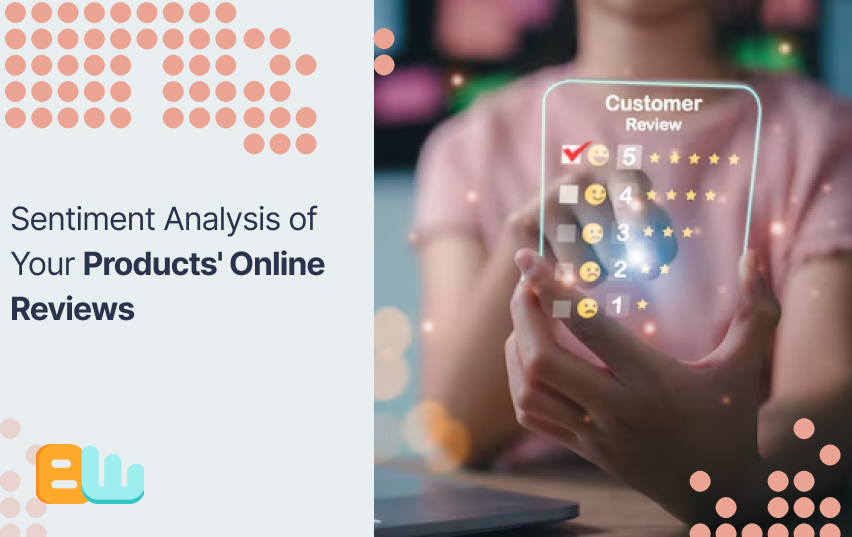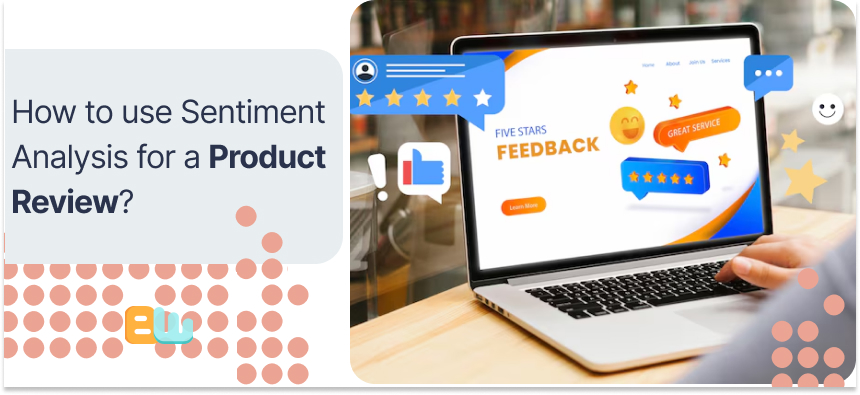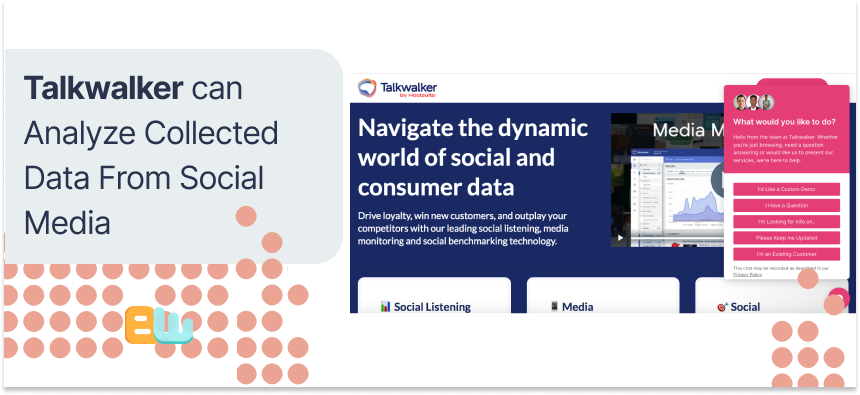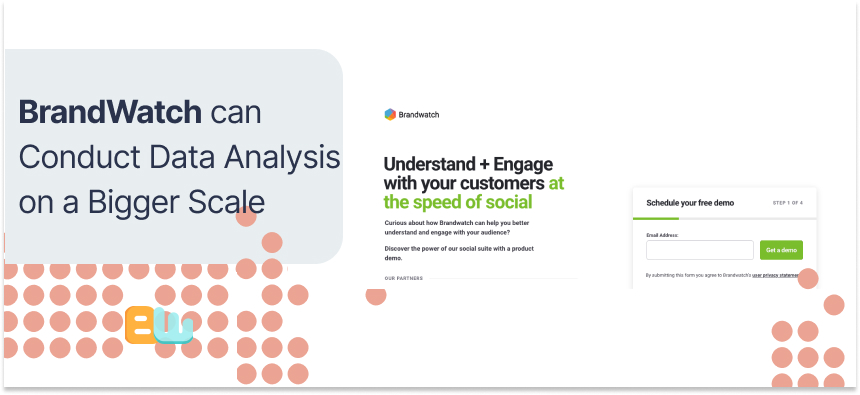
Sentiment analysis, called opinion mining, is a natural language processing approach known as NLP. It can recognize the emotional tone hiding behind a text.
This technique can identify the positivity or negativity neutrality of data. Companies and organizations use sentiment analysis to monitor and evaluate product sentiment based on customers’ reviews and feedback. The main goal of conducting sentiment analysis is to understand the customer’s needs.
This method involves different processes, such as machine learning, data mining, and artificial intelligence, to assess and evaluate customers’ opinions about a product or service.
Companies use sentiment analysis to gain insight into texts from online sources such as emails, blog posts, social media platforms, support tickets, forums, and comments.
To improve your brand, you must understand your customers’ needs. The best way to do this is to find out about your customer’s expectations of your products and services; accessing this information is your main goal for success.
But, you must gather data beyond whether customers like or dislike your product. You need to gain insight into the most detailed information from customers’ points of view about your products and services and evaluate how they feel about your strategies for presenting your products.
In this article, we will discuss the steps for performing sentiment analysis, its approaches, its advantages and disadvantages, and some of the best tools to help you achieve perfect sentiment analysis.
How to use Sentiment Analysis for a Product Review?

Companies are looking to improve their brand and services, and listening to customers’ voices is essential for reaching that goal. Product managers should offer customers what they want because most businesses believe they know what customers need, but that is only sometimes true. They should gather insights about customers’ expectations to help them create a robust roadmap.
Online review websites like Capterra, G2Crowd, or Google Play are the best platforms for gathering product feedback data. However, analyzing this unorganized data manually can take a lot of time, which is where sentiment analysis can help businesses.
Sentiment analysis helps brands understand what customers like and dislike about a product. They can compare their product reviews with their competitors and get the most updated customer feedback and insights. They can save time and money by replacing sentiment analysis with manual data processing.
Now that we understand the application of sentiment analysis to product reviews let’s examine the steps needed to conduct sentiment analysis.
Step 1. Data Gathering
The first step of performing a sentiment analysis is gathering the data. These data can involve internal data, such as customer reviews, or external data, such as customer reviews on other rating websites. You should insert the data into a CSV or XLS document format, and then your data is ready for text analysis.
Step 2: Text cleaning
Many tools are available for text cleaning, which can help companies process the data so it is ready for analysis. These tools can remove stopwords and punctuations such as a, and, or, but, how, what, and commas. Text cleaning tools will help us clean the texts from anything unrelated to the analysis or that can interfere with accurate analysis.
Step 3: Analyzing data
When you have your sentiment scores, you can use data visualization tools to quickly convert your data to visual reports. These reports include tables, charts, and graphs, which can identify patterns, trends, and insights into your data.
Every company’s products and features have different aspects, which can be categorized based on a relevant topic. For example, customer service is one aspect that can be divided into various topics such as reservations, open tickets, etc.
After taking all the above steps, the data will be delivered based on main categories. Businesses can evaluate if they have more positive, negative, or neutral feedback. Sentiments should provide the original feedback dates, which is crucial as it can provide a timeline for determining any peaks or downfalls in the reviews.
What is the Best Approach for Sentiment Analysis?

Multiple algorithms can be used in sentiment analysis methods based on how much data you want to analyze and how accurate you want them to be. People express sadness, happiness, positive, negative, interested, or uninterested emotions. Various sentiment analysis models are available to identify these emotions. Some of the most important models of sentiment analysis are as follows:
Fine-grained sentiment
This model will help you to understand the reviews of your customers. You can gain valuable insight by using this method. The only downside is that using this model can be more expensive and time-consuming compared to other models.
Aspect-based
This model is usually used to describe an aspect of a service or product. For example, a company selling laptops can use this model to describe aspects of the product, such as the battery, hard drive, memory, processor, etc. This model will help companies understand customers’ feelings about specific product features.
Intent Analysis
If companies can determine customers’ intent, they can save time, money, and effort. Companies often go after customers who have yet to buy a product anytime soon. However, if they can use intent analysis accurately, this problem can be solved. This method will help brands understand customers’ intentions, such as whether they want to buy a product or are just window-shopping. If a customer intends to buy a product, the brand can identify and target them with ads.
Emotion Detection
This method will help brands identify emotions, such as sadness, happiness, anger, frustration, fear, panic, and worry. The sentiment analysis model usually uses lexicon words to capture different emotions.
What are the Best Tools for Sentiment Analysis?

Sentiment analysis tools can automatically analyze text data with AI software and help companies understand customers’ feelings about their products and services. Sentiment analysis tools can identify emotions, tone, and priority in online reviews and feedback and categorize them based on positivity, negativity, or neutrality. This process will help organizations determine which customers’ needs they should mark as a priority. Some of the best sentiment analysis tools are as follows:
Awario
This tool is a web-based social listening software, and sentiment analysis is only one of its unique features. Awario can analyze social media data, such as tweets, posts, blogs, forums, and websites. When you log in to the software, you can use sentiment analysis.
Clarabridge
This tool is part of Clarabrige’s customer experience management solution with features like CX analysis and social. This tool uses an 11-point scale to detect the sentiment of collected data. In the process of text scoring, grammar, context, industry, and source are all evaluated.
HubSpot’s Service Hub
This customer feedback software tool can divide survey replies and assess them as positive or negative. It uses NPS® to identify whether customers’ reviews are good or bad and then classifies them according to their sentiments. Users can evaluate the results from dashboards, which will provide charts and graphs summarizing customer satisfaction levels.
Lexalytics
This tool has API features and can help you conduct sentiment analysis in the cloud. Companies that are looking for organizational solutions, interested in technical resource access, or need administrative classifications for security purposes should choose Lexalytics to perform sentiment analysis.
Talkwalker

This tool can analyze collected data from social media. Talkwalker uses AI features to detect and analyze customers’ tones in online reviews and feedback gathered from primary social media networks. This tool can detect sarcasm and let brands identify customers’ interests. Companies can determine which aspects of their products or services customers are more interested in and which features they dislike.
Repustate
This tool can perform textual sentiment analysis in 17 languages. Before the analysis process starts, this tool activates part-of-speech tagging, breaking down the text blocks into grammatical sections.
Reputation
This tool works based on natural language processing or NLP, which can interpret customers’ sentiments and analyze their feedback into topics and trends. Reputation uses enhanced text analysis to identify customers’ reviews and detect their positivity or negativity.
Brand24
This tool can automatically conduct sentiment analysis for your brand or any related topic to your business. Brand24 can gather accessible mentions and comments across the internet, including social media, blogs, websites, customer reviews, forums, videos, podcasts, and many other places.
Socialsearchers
This tool can detect hashtags, keywords, and usernames across social media platforms. Social searchers will provide analytics such as trending hashtags, customer insights, and social media influencers. A free version of Socialsearchers allows you to use sentiment analysis. It will offer you a general sentiment of data on social media platforms and trendy posts separately and classify them based on positivity and negativity.
BrandWatch

This tool can conduct data analysis on a bigger scale. Brandwatch can determine these six emotions based on sentiment analysis. The BrandWatch team was able to evolve an algorithm for sentiment analysis.
Final thoughts
Product managers and their teams are usually absorbed in their daily tasks and responsibilities and must remember to listen to their customers’ voices. Sometimes, companies receive less feedback than expected because they need a practical system.
However, once a practical system is chosen and ready to work, a wave of data flows into the company. All brands should ensure they have the proper tools for analyzing these data quickly, accurately, and cost-effectively. Product sentiment analysis for product reviews should be clear and straightforward, and companies should try to keep this process’s complexity at a lower level.
By using the right AI tools for sentiment analysis, companies can detect and analyze data through multiple languages and even change sentiment rules based on the company’s needs and requirements. Companies can gain valuable and practical insights by choosing the correct sentiment analysis approach based on the organization’s goals.
Sentiment analysis is a beneficial tool for pulling out information, and if a brand uses it with other types of software, its real impact can emerge throughout the company.
